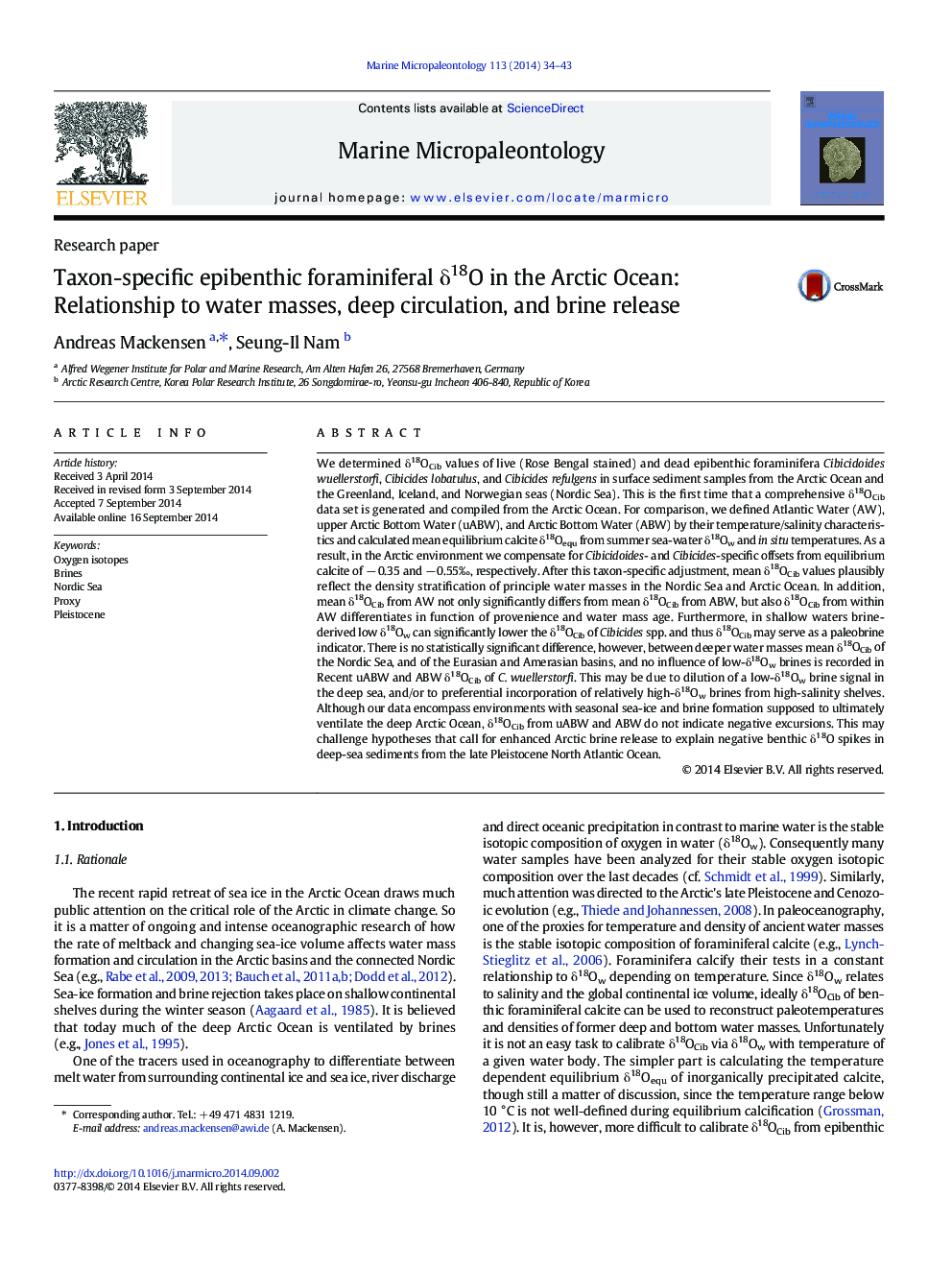| کد مقاله | کد نشریه | سال انتشار | مقاله انگلیسی | نسخه تمام متن |
|---|---|---|---|---|
| 6448539 | 1642172 | 2014 | 10 صفحه PDF | دانلود رایگان |
عنوان انگلیسی مقاله ISI
Taxon-specific epibenthic foraminiferal δ18O in the Arctic Ocean: Relationship to water masses, deep circulation, and brine release
دانلود مقاله + سفارش ترجمه
دانلود مقاله ISI انگلیسی
رایگان برای ایرانیان
موضوعات مرتبط
مهندسی و علوم پایه
علوم زمین و سیارات
فسیل شناسی
پیش نمایش صفحه اول مقاله

چکیده انگلیسی
We determined δ18OCib values of live (Rose Bengal stained) and dead epibenthic foraminifera Cibicidoides wuellerstorfi, Cibicides lobatulus, and Cibicides refulgens in surface sediment samples from the Arctic Ocean and the Greenland, Iceland, and Norwegian seas (Nordic Sea). This is the first time that a comprehensive δ18OCib data set is generated and compiled from the Arctic Ocean. For comparison, we defined Atlantic Water (AW), upper Arctic Bottom Water (uABW), and Arctic Bottom Water (ABW) by their temperature/salinity characteristics and calculated mean equilibrium calcite δ18Oequ from summer sea-water δ18Ow and in situ temperatures. As a result, in the Arctic environment we compensate for Cibicidoides- and Cibicides-specific offsets from equilibrium calcite of â 0.35 and â 0.55â°, respectively. After this taxon-specific adjustment, mean δ18OCib values plausibly reflect the density stratification of principle water masses in the Nordic Sea and Arctic Ocean. In addition, mean δ18OCib from AW not only significantly differs from mean δ18OCib from ABW, but also δ18OCib from within AW differentiates in function of provenience and water mass age. Furthermore, in shallow waters brine-derived low δ18Ow can significantly lower the δ18OCib of Cibicides spp. and thus δ18OCib may serve as a paleobrine indicator. There is no statistically significant difference, however, between deeper water masses mean δ18OCib of the Nordic Sea, and of the Eurasian and Amerasian basins, and no influence of low-δ18Ow brines is recorded in Recent uABW and ABW δ18OCib of C. wuellerstorfi. This may be due to dilution of a low-δ18Ow brine signal in the deep sea, and/or to preferential incorporation of relatively high-δ18Ow brines from high-salinity shelves. Although our data encompass environments with seasonal sea-ice and brine formation supposed to ultimately ventilate the deep Arctic Ocean, δ18OCib from uABW and ABW do not indicate negative excursions. This may challenge hypotheses that call for enhanced Arctic brine release to explain negative benthic δ18O spikes in deep-sea sediments from the late Pleistocene North Atlantic Ocean.
ناشر
Database: Elsevier - ScienceDirect (ساینس دایرکت)
Journal: Marine Micropaleontology - Volume 113, December 2014, Pages 34-43
Journal: Marine Micropaleontology - Volume 113, December 2014, Pages 34-43
نویسندگان
Andreas Mackensen, Seung-Il Nam,